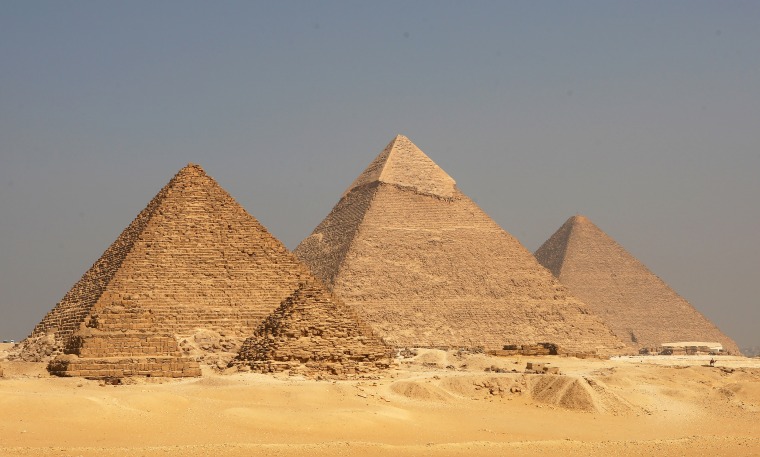An Egyptian pyramid that has fascinated the world for 4,500 years is still spilling secrets.
Scientists have found a hidden corridor about 30 feet long near the main entrance to the Great Pyramid of Giza that could lead to more discoveries, Egyptian officials said on March 2. The pyramid outside Cairo is the last of the Seven Wonders of the Ancient World still standing.
"This discovery, in my opinion, is the most important discovery of the 21st Century," Zahi Hawass, Egypt's former minister of antiquities, told reporters outside the pyramid.

The new area was found without moving any rocks or doing any digging thanks to a project called Scan Pyramids started by Egypt's Ministry of Antiquities in 2015.
Using advanced cosmic-ray scans and 3D simulations, researchers were able to peer behind the thick limestone walls of a cavity on the north face of the 456-foot-tall pyramid without any drilling or excavation.
The newly discovered corridor, which Egyptian officials said is about 6.5 feet wide and 30 feet long, was found behind gigantic chevrons (or V-shaped rocks) near the front entrance.
In 2016, scientists discovered a cavity behind the chevrons, and now researchers believe the corridor may have been built to relieve pressure inside the massive pyramid.
"This corridor, it’s protecting or reducing the pressure on something beneath it," Mostafa Waziri of Egypt's Supreme Council of Antiquities said. "Might be chamber, might be something else. Very soon, we can figure out what is the main issue of this corridor."
One of the most popular tourist destinations in the world, the Great Pyramid of Giza was built as a tomb for the pharaoh Khufu, who died in 2566 BC, according to Egypt's Ministry of Tourism and Antiquities.
It took an estimated 10 to 20 years to build and was the world's tallest structure until the Eiffel Tower in Paris was built in 1889.